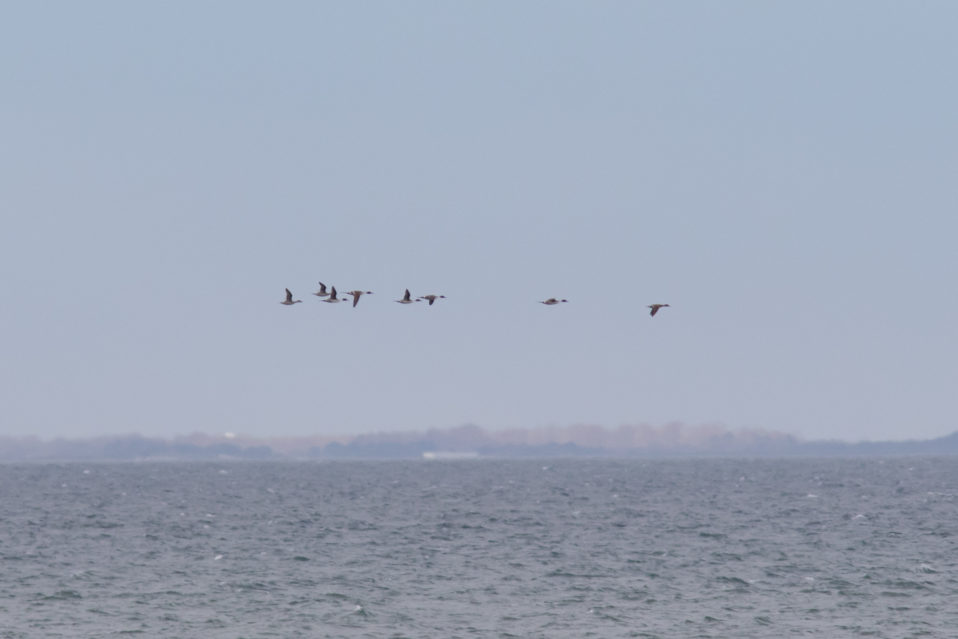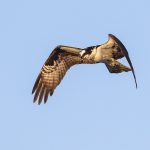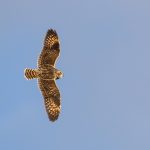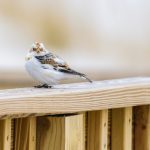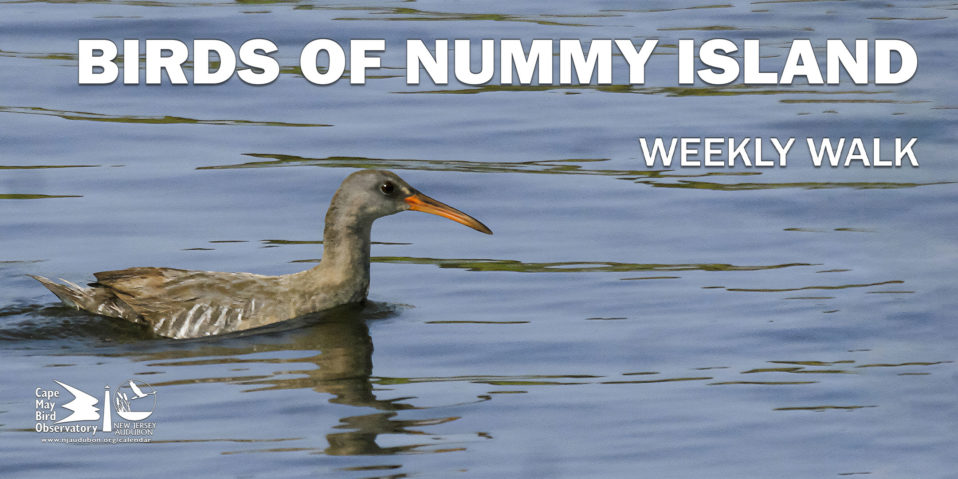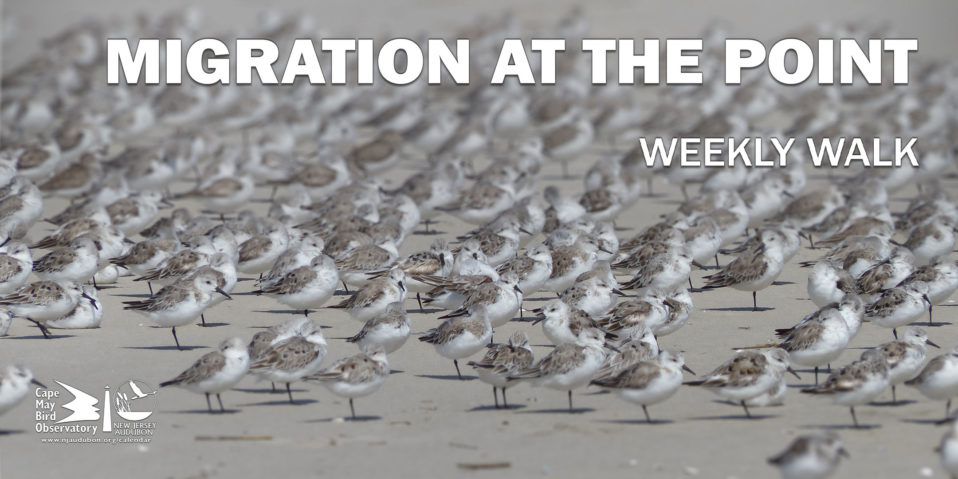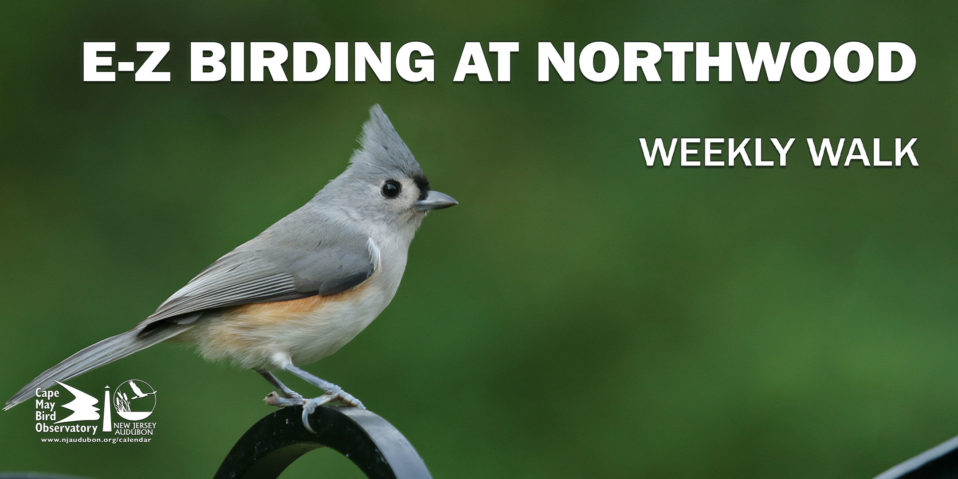Northern Pintail migrating north past the Cape May Springwatch.
Photo © Jesse Amesbury.
BY TOM REED & JESSE AMESBURY
Introduction
Spring greetings from Cape May! The 2022 Cape May Springwatch commenced Tuesday, March 1, and daily migration monitoring will continue at Cape May Point through the last day of May.
We are once again extremely grateful to collaborators Larry & Judy Winne, whose support again makes the work we do possible, and are very pleased to welcome back Carl Zeiss Sports Optics as this year’s corporate sponsor. CMBO is also appreciative of continued partnerships with data entry provider Trektellen, which offers unparalleled solutions for migration count projects, and the Borough of Cape May Point, which allows us access to the count site at Coral Avenue. Tom Reed will again coordinate field operations this season with assistance from Jesse Amesbury, this year’s Springwatch Technician. Jesse is certainly no stranger to Cape May or CMBO, as a veteran of both the Cape May Hawkwatch and New Jersey’s beach-nesting bird program.
Folks who are familiar with the Springwatch program may again notice our continued attempts to monitor grounded migrants at Cape Island this season. We will continue to use the data gleaned from these exploratory, additional surveys to compare and contrast with totals accrued from the visible migration count at Coral Ave, all with an eye toward generating a more comprehensive and well-rounded picture of how spring migration unfolds here at land’s end.
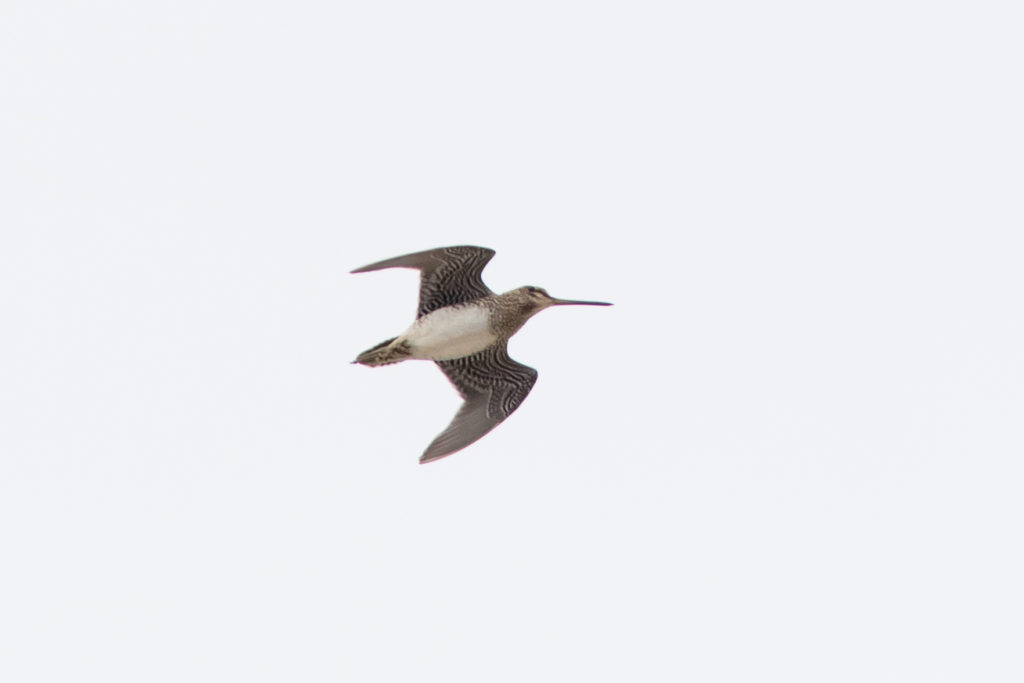
A bold Wilson’s Snipe briefly contemplates a diurnal crossing
of Delaware Bay on March 3.
Photo © Jesse Amesbury.
Summary
The season opened with southeast winds and a light but interesting waterbird movement, headlined by 29 Razorbills departing Delaware Bay to the east, and a hefty (by recent Cape May standards) total of 35 White-winged Scoters. The following day brought another 19 Razorbills, along with 6 Common Mergansers flying north over the bay– the most we’ve ever tallied in a single day during spring monitoring. A light but noticeable arrival of Northern Gannets was documented on the 3rd, along with the year’s first Laughing Gull, and a Wilson’s Snipe that attempted to cross the bay but quickly decided better of it. We also recorded the first 2 Common Ravens of the season.
The 4th and 5th featured north and northeast winds, which predictably kept migration to a minimum. Conversely, the 6th and 7th saw a shift to strong south/southwest winds, with temperatures away from the coast surging well into the 70s. The 7th featured a fair movement of Canada Geese that was focused on the first hour of the day, along with the season’s first Great Blue Herons arriving from Delaware and a surprisingly early Tricolored Heron doing the same.
The unseasonable warmth was swept away by a strong cold front late on the 7th, which ushered in cooler temps and a stiff northwest breeze for the 8th. As is often the case during migration, we saw a number of landbirds apparently shoved to the coast by the front, including an early Purple Martin, 25 Tree Swallows, 11 Bald Eagles (all headed back toward Delaware), 20 Eastern Bluebirds, and 16 Pine Warblers moving through the dunes. The rest of the period was dominated by cooler weather and northerly/easterly winds, bringing about another stretch of lower migration intensity. However, the show always goes on, with the season’s first Osprey on the 10th, and the first Piping Plover the next day. We also enjoyed daily sightings of both Gray and Harbor seals, along with 2 Harbor Porpoise on the 10th.
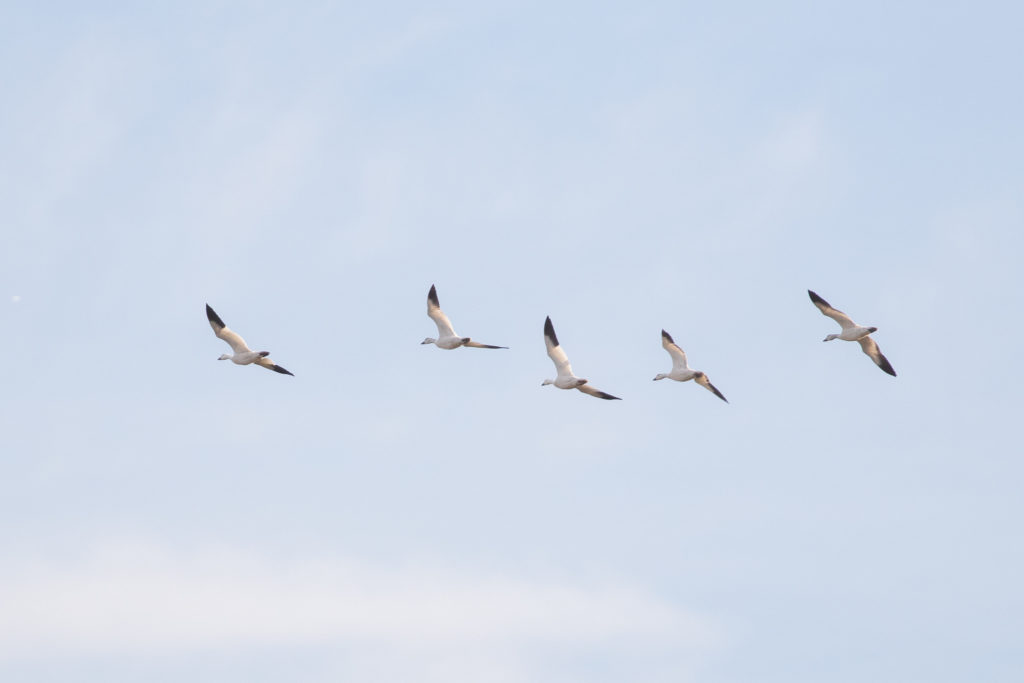
Snow Geese migrating north over Cape May Point on March 8,
potentially correcting their course after being blown offshore by strong northwest winds.
Photo © Tom Reed.
Notable Species
The following rare, unseasonable, or otherwise interesting species were reported within the Springwatch recording area during the past week:
Cackling Goose: generally a rare migrant locally, we have come to expect one (or a few) during the strongest early-spring goose flights in recent years. Such was the case on the 7th, when one flew past with a flock of Canada Geese.
Razorbill: this species has certainly been more prevalent than usual during early March. A total of 79 have been counted as of the 11th, including a max of 29 on the 1st. The species has been recorded on eight of the count’s first 11 days. We’ve noted several individuals in breeding plumage.
Common Raven: scarce but increasingly regular at Cape Island, two were found during the Coral Ave count on the 3rd, and an additional two appeared on the 5th. The original two individuals continued in the area through at least the 11th.
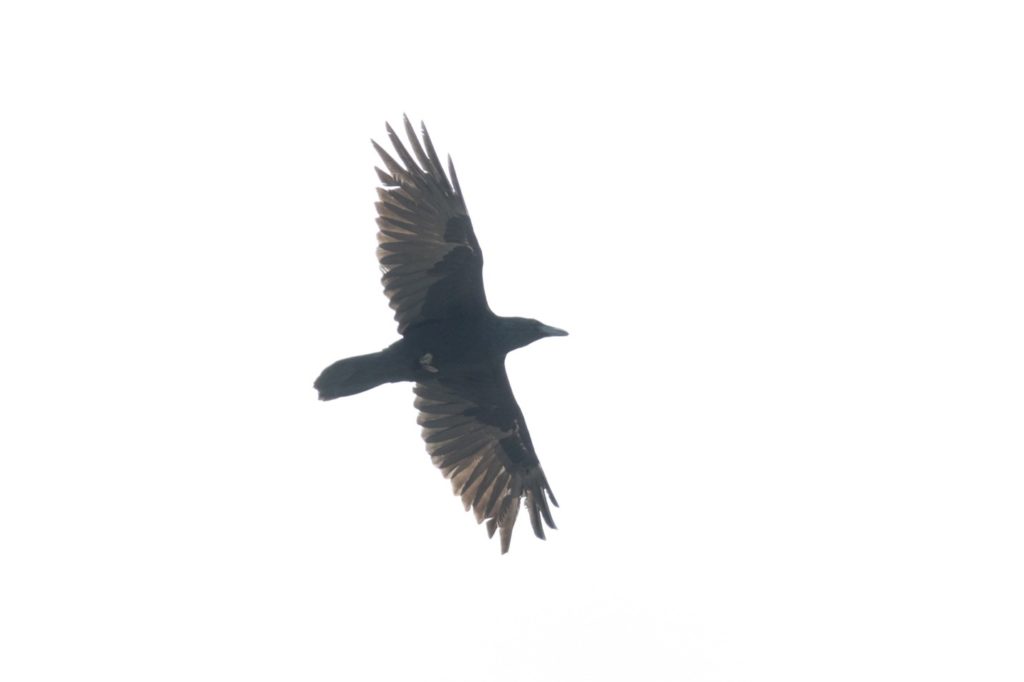
Common Raven soaring over Cape May Point: unheard of a decade ago,
but now an increasingly expected sight in early spring.
Photo © Jesse Amesbury.
Purple Martin: the season’s first was noted on the 8th, on the heels of a strong cold front. This represents the earliest individual we’ve tallied during the official Springwatch, and was apparently the first to be found in New Jersey this year.
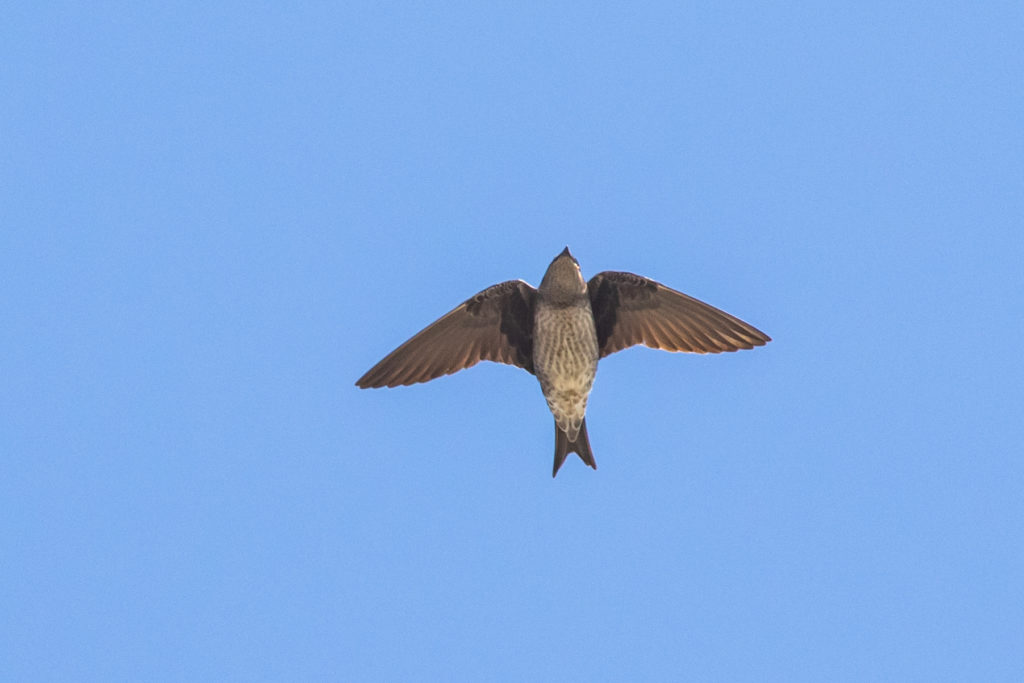
Purple Martin flying past the Cape May Springwatch on March 8.
Photo © Tom Reed.
Pine Warbler: the season’s first was noted on the 3rd, matching the previous year’s arrival date. A total of 28 have been recorded through the 11th, including a season-to-date high of 16 on the 8th. All seen well have been adult males, as we would expect to see during early March.
——————————————————————————————————————————-
Thanks for reading, and we hope to see you in Cape May this spring! The migration count at Coral Ave starts at sunrise every day and continues for at least four hours. To learn more about the Cape May Springwatch (and to view daily migration count totals), head over to our Springwatch information page. This project is made possible through the support of Larry & Judy Winne, Zeiss Sports Optics, and the Borough of Cape May Point, NJ.
Thank You To Our Supporters
Judy and Larry Winne





